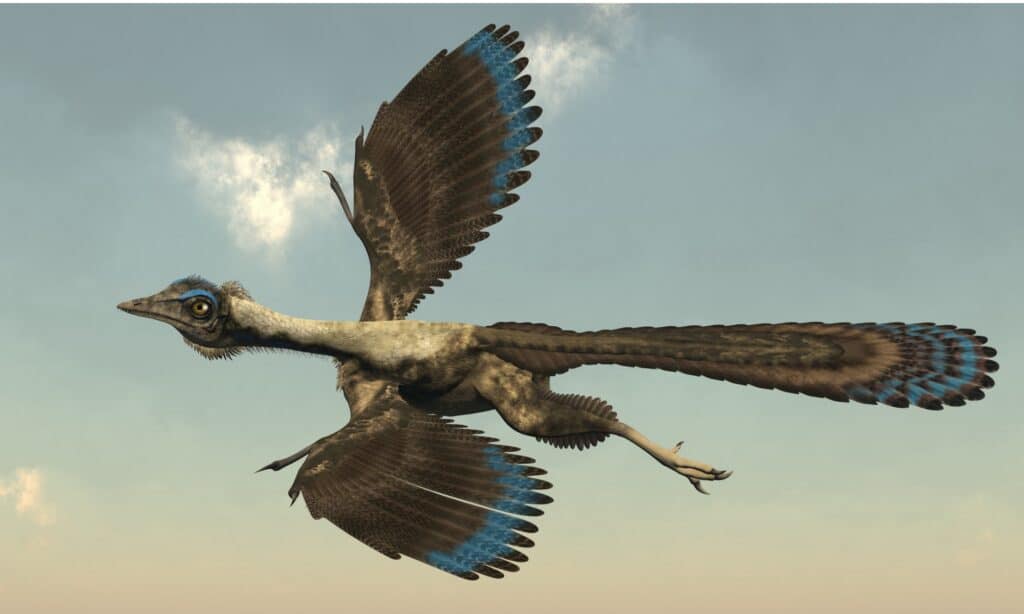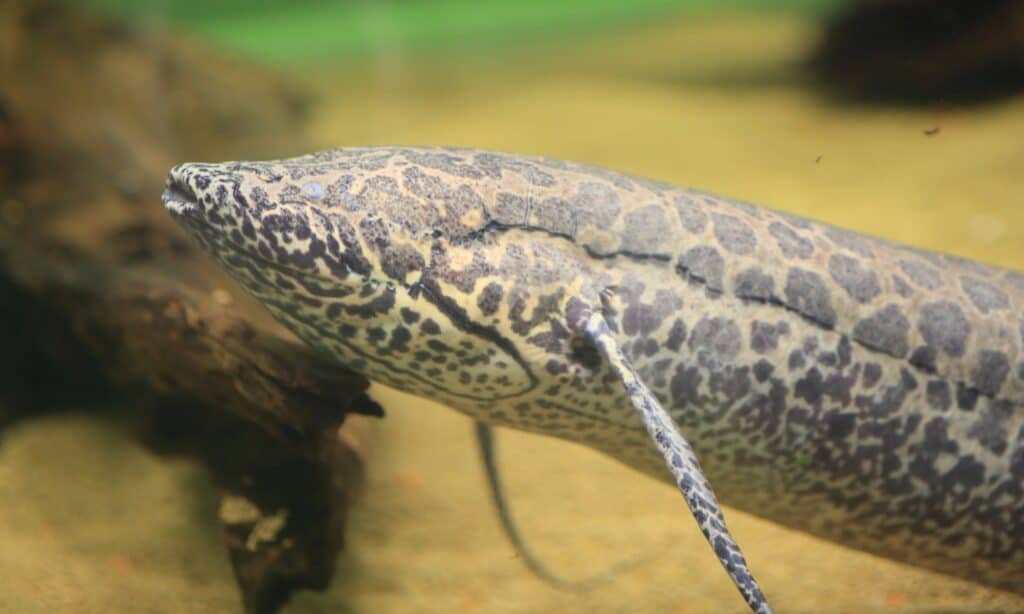Many people associate the Jurassic period with the fearsome dinosaurs from the movie Jurassic Park. While the film franchise certainly did popularize the era, there is a whole lot more to this epoch than carnivorous dinosaurs.
At the beginning of the Jurassic period, the large supercontinent Pangea began to break apart, starting the formation of the world as we know it today. Even then, it was only starting to form two supercontinents called Laurasia and Gondwana.
During the Jurassic period, the climate was warm and wet, leading to an abundance of resources that could sustain large animal and plant species. It was so warm that there were no ice caps, and instead, forests grew in the cooler areas closer to the poles.
Why Is It Called the Jurassic Period?
The name Jurassic comes from the Jura mountains, which are located between France and Switzerland. It is in these mountains that archaeologists first found and studied artifacts from the Jurassic period.
When Did the Jurassic Period Occur?
This period occurred between 145.5 and 196.6 million years ago. It is the middle of three eras of the Mesozoic era which occurred between 66 and 252.2 million years ago. Before the Jurassic period was the Triassic period, and after was the Cretaceous period.
Jurassic Period Animals
Some people call the Jurassic period the age of the dinosaurs because of how prolific and abundant these animals were during this time period. However, they weren’t the only ones around!
Birds
The Jurassic period is when the first birds appeared. They evolved from therapods, a group of dinosaurs that included the fearsome Tyrannosaurus rex, as well as the large Spinosaurus and Giganotosaurus. Today, the more than 10,000 bird species living on our planet are still considered theropods and are the only living descendants of dinosaurs around today.
The Archaeopteryx is perhaps the most well-known early avian. It has features of both reptiles and modern birds. It lived in what is now Bavaria, a state in Germany. At the time, Germany was located much further south, at a similar latitude to Florida, but had a much drier climate. Archaeopteryx was about the size of a modern raven, weighing about 2.2 pounds. It could fly and may have had a combination of feathers and protofeathers — fur-like feathers that were a precursor to modern feathers. It was a carnivore and ate small animals, using its “killing claws” and sharp teeth for hunting and eating.

is the most well-known early bird. It has features of both reptiles and modern birds.
©iStock.com/Elenarts108
Dinosaurs
They call it the “age of dinosaurs” for a reason! There were indeed a lot of dinos around during this time. Many carnivorous dinosaurs belonged to the aforementioned group, theropods. These dinosaurs were mostly carnivores, but later in the Jurassic period, some herbivorous theropods evolved, such as the Limusaurus. Excluding modern birds, which are also theropods, the largest theropods were likely the infamous T-Rex which could have been as tall as 13 feet high at the hips and over 40 feet long. They weighed over 16,000 pounds. However, T-Rex did not live until the following Cretaceous period. The smallest ones were the Anchiornis huxleyi which was just a foot long and weight about 100 grams.
Theropods hunted, perhaps in small groups. They walked on two legs making them faster than herbivorous dinosaur species that walked on all fours, perhaps giving them a competitive advantage.
Ornisthicians are another group of dinos that thrived during the Jurassic period. They included herbivores like the triceratops and stegosaurus. Even though their name means “bird-hipped” because they have similar hips to modern birds, they are only distantly related to birds, since birds are theropods. They had several unique characteristics that set them apart from other dinosaurs like bones at the front of their mouth that may have been an attachment point for a beak!
Sauropods are the largest animals to have ever lived in the history of our planet earth. Great examples of a characteristic sauropod include brontosaurus, brachiosaurus, and diplodocus. They had small heads, long necks, large bodies, and long tails. The supersaurus was 112 feet long! The barosaurus may have been over 150 feet long. The barosaurus was also the tallest dinosaur, at over 70 feet tall. Some researchers believe that some sauropods would have used their tails as a weapon, like a whip. They may have also been able to scare other creatures away by making a sonic boom, like cracking a whip, with their tails.
Other Reptiles
There were other reptiles besides dinosaurs around during the Jurassic period. Turtles started diversifying during this time, leading to several extinct species that are part of the two turtle suborders that exist today, Pleurodira and Cryptodira.
The first squamates, meaning scaled reptiles, the order of reptiles that includes modern snakes and lizards also appeared during the Jurassic period. There are plentiful fossils of early ancestors of snakes, lizards, and geckos from this time.
Ichthyosaurs were a group of large marine reptiles. They ranged from three to 60 feet long and may have resembled modern dolphins. Even though they were reptiles they gave birth to live offspring. Early discoveries of fossils in the 1800s led to a fascination with these animals and led some researchers at the time to wonder if an ichthyosaur might still be lurking in the watery depths.
Plesiosaurs are another extinct type of reptile that is not a dinosaur. Towards the late Jurassic period, the Pliosaur, a type of plesiosaur, would have been at the top of the food chain, in the water at least. With a six-foot-long skull and a 40-foot-long body, it was one of the largest animals swimming around.
Pterosaurs were the first animals with a spine to fly. They are a group of flying reptiles that includes the well-known genus Pterodactyl. Some people call them “flying dinosaurs,” but they are not technically dinosaurs. Early researchers believed these were closely related to birds, and it’s easy to see why. However, birds are descended from the theropod dinosaurs.
Frogs and Other Amphibians
Prosalirus, which first appeared during the Jurassic period, was the first frog-like animal that hopped like modern frogs. Not much is known about them because only three skeletons have been found so far. Other frog relative fossils, like those of Notobachtrus, are more plentiful.
Other amphibians include early salamanders that belong to the Cryptobranchoidea family. The species around in the Jurassic period are extinct today, but the Cryptobranchoidea family has many modern living species.
Fish

African
lungfish
were present in the Jurassic period and are still around today.
©iStock.com/feathercollector
Lungfish, which are still around today, were present in the Jurassic period. These fish can actually breathe in water or air. Cartilaginous fish, similar to modern sharks, also thrived during this time. The oldest known ray, the Antiquaobatis, first appeared during the early Jurassic period.
Invertebrates
Insects and spiders did well during the Jurassic period as well. Beetles thrived, and the first weevils appeared. The first butterflies and moths also appeared around the transition between the Triassic and Jurassic periods. There were also dragonflies and damselflies as we know them today.
One must wonder if dinosaurs were as annoyed by insects as we are today!
This was also the time when the first crabs appeared. Later in the period, hermit crabs developed. Additionally, the first octopi were present during the Jurassic time.
Mammals
While mammals (namely humans!) may be on top of the world today, in the Jurassic period, they were just getting their start. Jurassic mammals were small herbivores and insectivores. They did not compete directly with dinosaurs, though many were considered a good meal for a carnivorous dino.
In the Jurassic period, mammals were descended from early cynodonts, a group of animals that includes mammals today. Before the Jurassic period, these animals had the skeletal characteristics of mammals but most of them likely laid eggs instead of growing offspring inside their uterus with a placenta for feeding during pregnancy. These animals are sometimes called “primitive mammals” or “mammaliaform” meaning mammal shaped.
Before the Jurassic period, there were also species of non-mammalian cynodonts, but few of them survived into the Jurassic period.
Mammals, as we know them today, are part of a subclass of animals called Theria. This includes both mammals and marsupials. The earliest known placental mammal fossil is a species called Juramaia. A placental mammal is one that gestates its young inside the body and then has live birth. It existed during the late Jurassic period and was a small shrew-like creature.
Jurrasic Period Plants
Ferns were plentiful at the beginning of the Jurassic period. They used spores to reproduce and had a network of roots and tissue to get plenty of water. Gingkoes were also plentiful at this time. The only living relative of the prehistoric plants is the medicinal herb Gingko biloba.
During the Jurassic period, the first gymnosperms arose. These are plants that reproduce with exposed seeds, usually in cones (like pinecones). This method was successful as we still have many of these plants around today. This is in contrast to angiosperms which have enclosed seeds, produce flowers, and bear fruit as part of their reproductive process.
During this time, the first flowering plants also appeared. However, there wouldn’t have been many of them.
Another type of plant that lived during that time was cycads. These plants often resemble palm trees but are not related to them. They have a cylindrical trunk that can be above ground or in the ground depending on the species. There are many cycad species around today.
Some of the plants that we know today started during the Jurassic period. These include horsetails and quillworts.
How Did the Jurassic Period End?
At the end of the Jurassic period, there was a small extinction. Many sauropods, marine reptiles, and other animals became extinct. However, it was not the huge extinction event that killed all dinosaurs. That came at the end of the following period, the Cretaceous period.
Bringing Back the Jurassic Period
Some scientists want to bring back some of the species from the Jurassic period, like dinosaurs. They may be able to do so by editing the DNA of their closest living relatives—birds—to resemble dino DNA. However, dinosaur DNA is hard to come by. Fossils don’t actually contain biological material most of the time. They are actually made up of rock and sediment. Even if tissue did somehow survive for millions of years, experts don’t believe that DNA could survive for that long.
However, this philosophy may help scientists bring back species that have gone extinct more recently, like the woolly mammoth or dodo bird.
The photo featured at the top of this post is © iStock.com/chaiyapruek2520
FAQs (Frequently Asked Questions)
When Did the Jurassic Period Occur?
This period occurred between 145.5 and 196.6 million years ago. It is the middle of three eras of the Mesozoic era which occurred between 66 and 252.2 million years ago. Before the Jurassic period was the Triassic period, and after was the Cretaceous period.
Why Is It Called The Jurassic Period?
The name Jurassic comes from the Jura mountains, which are located between France and Switzerland. It is in these mountains that archaeologists first found and studied artifacts from the Jurassic period.
Thank you for reading! Have some feedback for us? Contact the AZ Animals editorial team.







